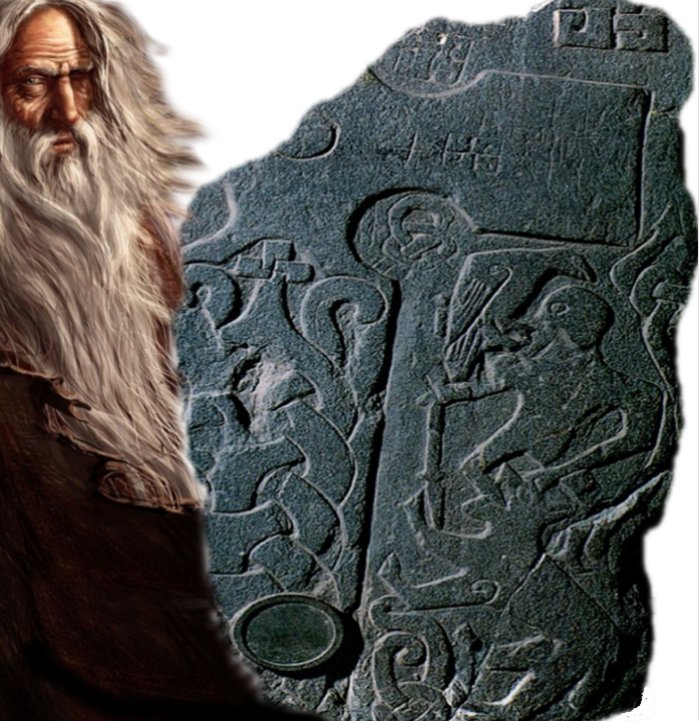Gungnir: Odin’s Magical Weapon That Provoked Or Reduced Conflicts In Norse Mythology
A. Sutherland - AncientPages.com - Among many colorful epithets of the great god, Odin was "Lord of the Spear." Odin owned Gungnir (in Old Norse means "swaying one"), a magical weapon that was unstoppable in its fight and governed the fortunes of war.
Credit: Stock Adobe - bourbonbourbon
This divine weapon would quickly strike whatever he aimed at, and it always flew straight to its target and never missed it.
Brokk and Eitri were well-known craftsmen among the dwarves.
According to Snorri's Edda, Gungnir, the ship Skidbladnir, and the goddess Siv's golden hair were manufactured at the request of Loki by the dwarf artisans Brokk and Eitri. They were sons of Ivaldi and lived in the underground cave in Svartalfheim.
Another version says that after drinking from Mimir's Well, Odin broke off a branch of the sacred tree Yggdrasil, which overshadowed the spring, and made his favorite weapon - the spear Gungnir.
In 'Sigrdrivomal,' a part of the Poetic Edda text in Codex Regius, a sailor mentions that Odin carved runes on Gungnir's cape, and they held magical powers.
 Odin with his spear, Gungnir. Sculpture by Lee Lawrie, Library of Congress
Odin with his spear, Gungnir. Sculpture by Lee Lawrie, Library of Congress
Sometimes, Odin entrusted to Hermod's care the precious spear Gungnir, bidding him to cast it over the combatants' heads about to engage in battle.
As the god of war, Odin usually carried the infallible Gungnir spear in his hand, and this fantastic weapon was so sacred that an oath sworn upon its point could never be broken.
Gungnir, which Odin used on the battlefield, symbolized the initiation of war. He threw it above the heads of the army of enemies. Legends say that if they fell, they became an offering to Odin. Warriors killed by a spear became part of the Einherjar, his troop of warriors in Asgard.
Left: Odin, god of war; Right: 10th-century panel from a Viking-era cross on the Isle of Man. It depicts Odin with his spear and a raven on his shoulder; they meet the wolf Fenrir, and this monstrous creature will devour them.
Gungnir was slender and very strong, and it became Odin's favorite weapon, which the god of war and magic used to provoke or reduce disagreements and conflicts.
Odin cast his spear during the war between the Aesir and the Vanir, and his skills were unlimited. The battle raged until both armies grew tired of the slaughter. But amazingly, neither side could win or lose, so this old tradition continued for a long time.
According to an old tradition, Norse warriors threw their spears at the start of a battle to invoke Odin's protection in war.
This particular spear is of great importance at Ragnarok, the battle on the Last Day. Odin's magic weapon Gungnir and Draupnir ('Dripper'), a fabulous golden ring from which eight equally heavy rings drip every ninth night, are essential attributes for Odin's ability to uphold his power and position as king of the Aesir.
Part of helmet, thin, pressed bronze plate. Found in Vendel. Turning time. The figure possibly represents Odin. Source: Oscar Montelius, Om lifvet i Sverige under hednatiden (Stockholm 1905) s.98 - Public Domain
There are several versions of how Odin obtained the mighty and sacred Gungnir. According to one myth, dwarves forged it from sunlight as a gift to Odin. Another tale says Gungnir was among several objects forged by the dwarves as part of a contest arranged by the trickster god of Norse mythology, Loki.
Then, Loki gave it to Odin, saying:
"I take this spear called Gungnir and give it to you. It is a unique spear in that when aimed and thrown, it never misses its mark. And any oaths sworn with a hand upon its point cannot be broken."
Written by – A. Sutherland AncientPages.com Staff Writer
Updated on January 11, 2024
Copyright © AncientPages.com All rights reserved. This material may not be published, broadcast, rewritten or redistributed in whole or part without the express written permission of AncientPages.com
Expand for referencesReferences:
Gaiman N. Norse Mythology
Hedeager L. Iron Age Myth and Materiality
More From Ancient Pages
-
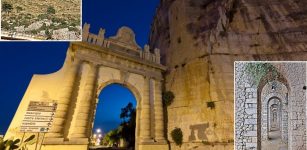 Terracina – Ancient City Where Mythology And History Meet
Places | Jan 16, 2024
Terracina – Ancient City Where Mythology And History Meet
Places | Jan 16, 2024 -
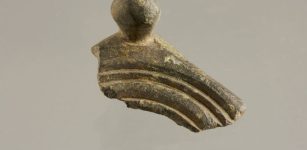 Piece Of Puzzling Roman Artifact Discovered In Belgium
Archaeology | Feb 16, 2023
Piece Of Puzzling Roman Artifact Discovered In Belgium
Archaeology | Feb 16, 2023 -
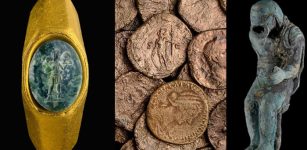 Magnificent Underwater Treasure Recovered From Two Ancient Shipwrecks Off The Coast Of Caesarea
Archaeology | Dec 28, 2021
Magnificent Underwater Treasure Recovered From Two Ancient Shipwrecks Off The Coast Of Caesarea
Archaeology | Dec 28, 2021 -
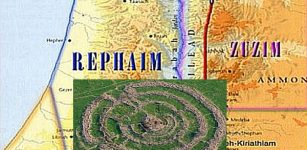 ‘Wheel Of Giants’: Mysterious Complex Of Circles – Prehistoric ‘Stonehenge’ Monument In The Middle East
Featured Stories | Mar 29, 2019
‘Wheel Of Giants’: Mysterious Complex Of Circles – Prehistoric ‘Stonehenge’ Monument In The Middle East
Featured Stories | Mar 29, 2019 -
 10,000-Year-Old Seeds Offer First Evidence Of Farming In A Green Sahara
Archaeology | Mar 19, 2018
10,000-Year-Old Seeds Offer First Evidence Of Farming In A Green Sahara
Archaeology | Mar 19, 2018 -
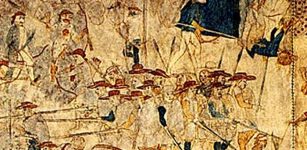 On This Day In History: Spanish Villasur Expedition Wiped Out By Pawnee And Otoe Warriors – On August 14, 1720
News | Aug 14, 2016
On This Day In History: Spanish Villasur Expedition Wiped Out By Pawnee And Otoe Warriors – On August 14, 1720
News | Aug 14, 2016 -
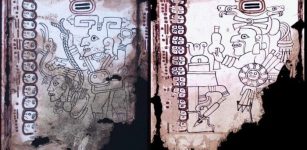 Grolier Codex – Oldest, Unique, Genuine Pre-Columbian Maya Manuscript That Survived Spanish Inquisition
Artifacts | Jan 20, 2018
Grolier Codex – Oldest, Unique, Genuine Pre-Columbian Maya Manuscript That Survived Spanish Inquisition
Artifacts | Jan 20, 2018 -
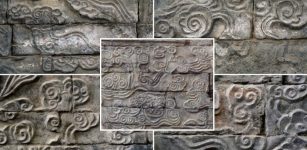 Huge Over 1,000-Year-Old Beautiful Stone Murals Discovered In Central China
Archaeology | Oct 14, 2022
Huge Over 1,000-Year-Old Beautiful Stone Murals Discovered In Central China
Archaeology | Oct 14, 2022 -
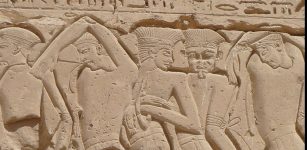 Mysterious Sea People: Many Theories But Their Origin Is still Unknown
Civilizations | Feb 24, 2015
Mysterious Sea People: Many Theories But Their Origin Is still Unknown
Civilizations | Feb 24, 2015 -
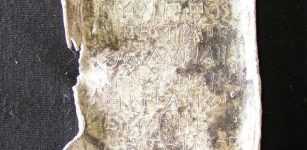 Curse Tablets With Messages To The Gods Of The Underworld Found In 2,500-Year-Old Well
Archaeology | Feb 7, 2020
Curse Tablets With Messages To The Gods Of The Underworld Found In 2,500-Year-Old Well
Archaeology | Feb 7, 2020 -
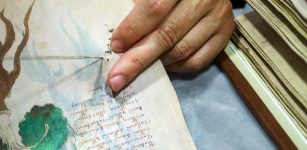 Mysterious Voynich Manuscript Was Written In Two Languages – Scientists Say
Archaeology | Apr 24, 2017
Mysterious Voynich Manuscript Was Written In Two Languages – Scientists Say
Archaeology | Apr 24, 2017 -
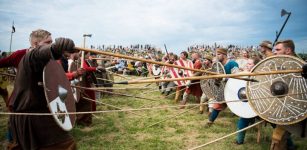 Secrets Of Viking Age Shields Finally Revealed
Civilizations | Oct 7, 2020
Secrets Of Viking Age Shields Finally Revealed
Civilizations | Oct 7, 2020 -
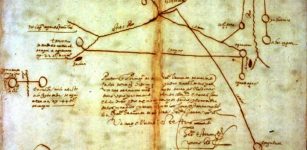 Etzanoa: Long-Lost Native American City Discovered In Kansas After 400 Years
Archaeology | Apr 24, 2017
Etzanoa: Long-Lost Native American City Discovered In Kansas After 400 Years
Archaeology | Apr 24, 2017 -
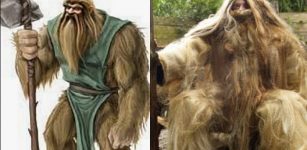 Basajaun: Giant Blacksmith, ‘Lord Of The Woods’ And How People Learned Secrets Of Agriculture
Featured Stories | Aug 27, 2020
Basajaun: Giant Blacksmith, ‘Lord Of The Woods’ And How People Learned Secrets Of Agriculture
Featured Stories | Aug 27, 2020 -
 Did Our Ancestors Know About Artificial Intelligence?
Ancient Technology | Sep 2, 2015
Did Our Ancestors Know About Artificial Intelligence?
Ancient Technology | Sep 2, 2015 -
 A 2,500-Year-Old Planned City In Tarighat, Chhattisgarh, India
Civilizations | Oct 8, 2014
A 2,500-Year-Old Planned City In Tarighat, Chhattisgarh, India
Civilizations | Oct 8, 2014 -
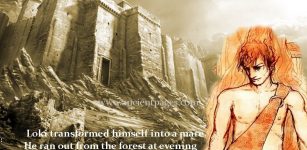 Asgard Walls Built By Giant Master Mason And Birth Of Magical Horse Sleipnir
Featured Stories | Apr 19, 2018
Asgard Walls Built By Giant Master Mason And Birth Of Magical Horse Sleipnir
Featured Stories | Apr 19, 2018 -
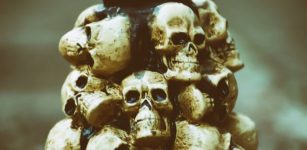 Day Of The Dead: From Aztec Goddess Worship To Modern Mexican Celebration
Ancient Traditions And Customs | Oct 30, 2019
Day Of The Dead: From Aztec Goddess Worship To Modern Mexican Celebration
Ancient Traditions And Customs | Oct 30, 2019 -
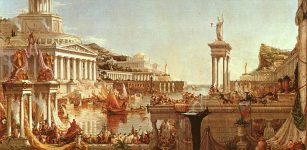 Did Lead Poisoning Cause The Fall Of The Roman Empire?
Archaeology | Oct 24, 2017
Did Lead Poisoning Cause The Fall Of The Roman Empire?
Archaeology | Oct 24, 2017 -
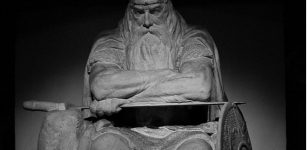 Legend Of Sleeping Hero Holger Danske: Viking Warrior Who Never Died
Featured Stories | May 8, 2016
Legend Of Sleeping Hero Holger Danske: Viking Warrior Who Never Died
Featured Stories | May 8, 2016


